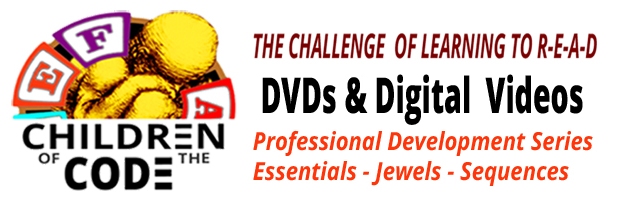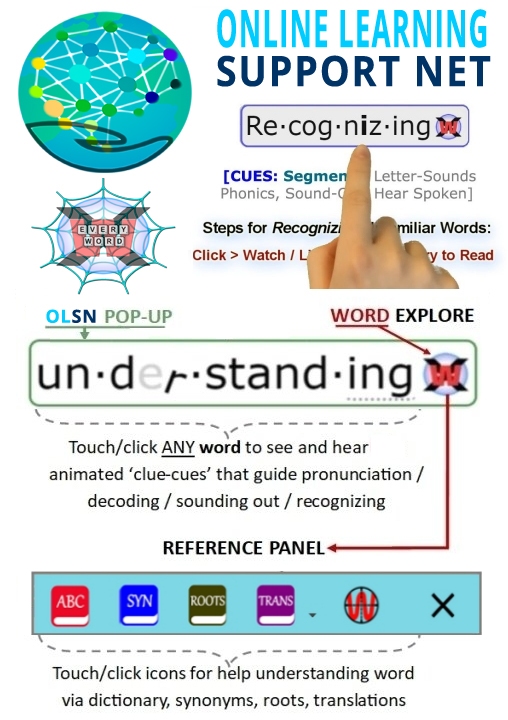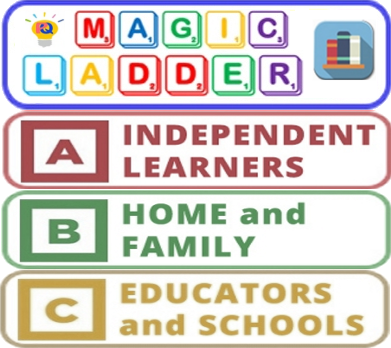Family Language
Family Readiness – Family Language
Note: Remember to click on any word on this page to experience the next evolutionary step in technology supported reading.
The Influence of Family Learning Environments on the Reading Readiness Trajectories of Children:

For most children. the relative ease or difficulty they experience in learning to read in school is based on their ‘reading readiness trajectory’ which has been developing since birth. There are three major contributors to a child’s reading readiness trajectory*:
1) LANGUAGE: children who don’t have sufficient verbal abilities or have small vocabularies are at great risk of reading difficultybecause their brains aren’t ready for the challenge – reading sits atop language.
2) EMOTION (self esteem): Learning to read is confusing and frustrating and requires ’emotional strength and resilience’ to avoid dropping into self-consciousness and/or shame which interferes with learning to read.
3) PRINT EXPOSURE & ALPHABETIC INSIGHT Understanding that words can be written and that writing is made of the letters of the alphabet, and the knowledge of the alphabet’s letters and their sounds are prerequisites to reading.
The stronger the family learning environment with respect to these contributors, particularly the first two, the less likely the child will suffer inordinate difficulty learning to read. Conversely, the weaker the family learning environment the greater the risk that the child will suffer difficulty.
By 9 months of age children’s brains are already beginning to take on language learning trajectories that will be more or less advantageous to their later language and literacy learning depending on the quality of the language they are experiencing.(1,2,) Their vocabulary growth begins to explode by age 3 (3,4) and the degree of family talk they engage in by age 4 is highly predictive of their IQs and reading scores in the 3rd grade (5).
It is very difficult to make up for a weak family learning environment (6). It costs more in terms of brain strain for the child (7) and in terms of dollars for the system (8,9). While preschools can change the readiness trajectories of children (10) it is impractical for them to intervene early enough in a child’s trajectory to be as optimal a location for intervention, in terms of neurological efficiency, as the family learning environment.
All of the above is corroborated by, consistent with, and explains much of what economists and sociologists call “family effects” (11). The cost-efficiency of the nation’s 500+ billion dollar a year K12 expenditures (12), reflects how effective we are in teaching reading. (13) Our effectiveness in teaching reading, indeed the quality of NCLB’s Reading 1st program most responsible for the recent upturn in reading scores, is how well we assess and accommodate for children’s readiness for reading (14) – accommodate for the trajectories they acquired in their family learning environments.
* For most children – a small percentage of children have innate neurobiological learning disabilities or dyslexia that severely affect the trajectory of the learning to read. (15)













